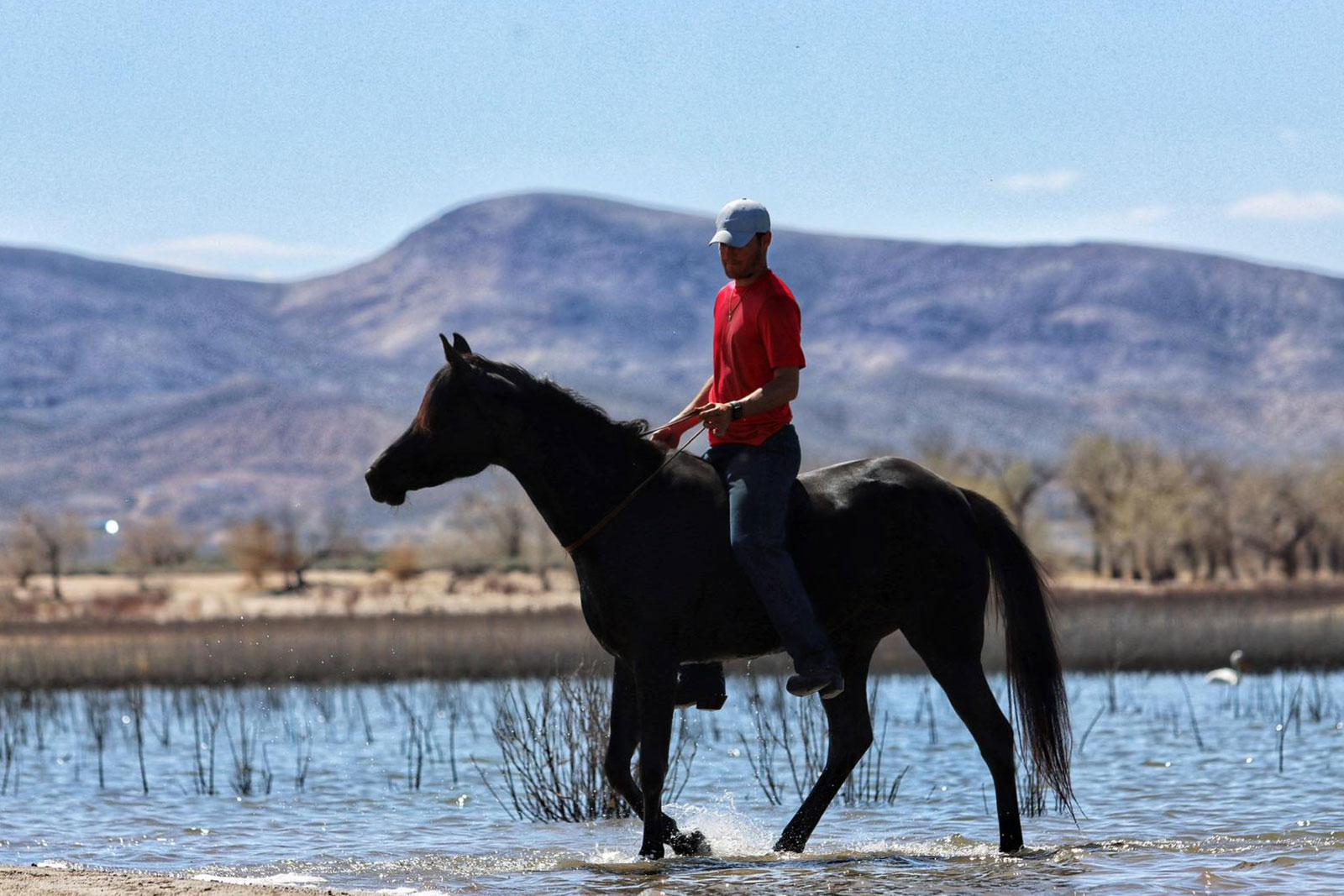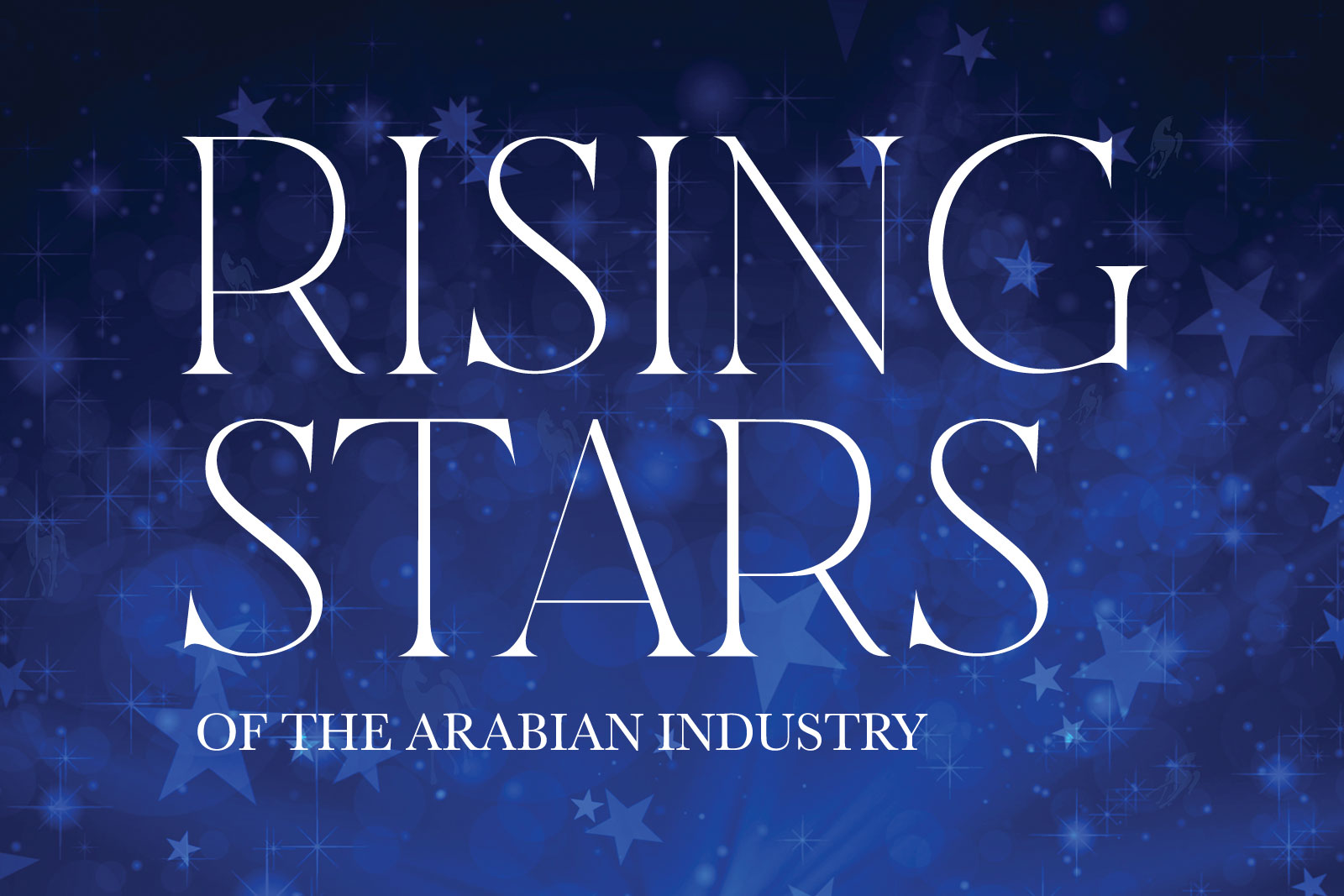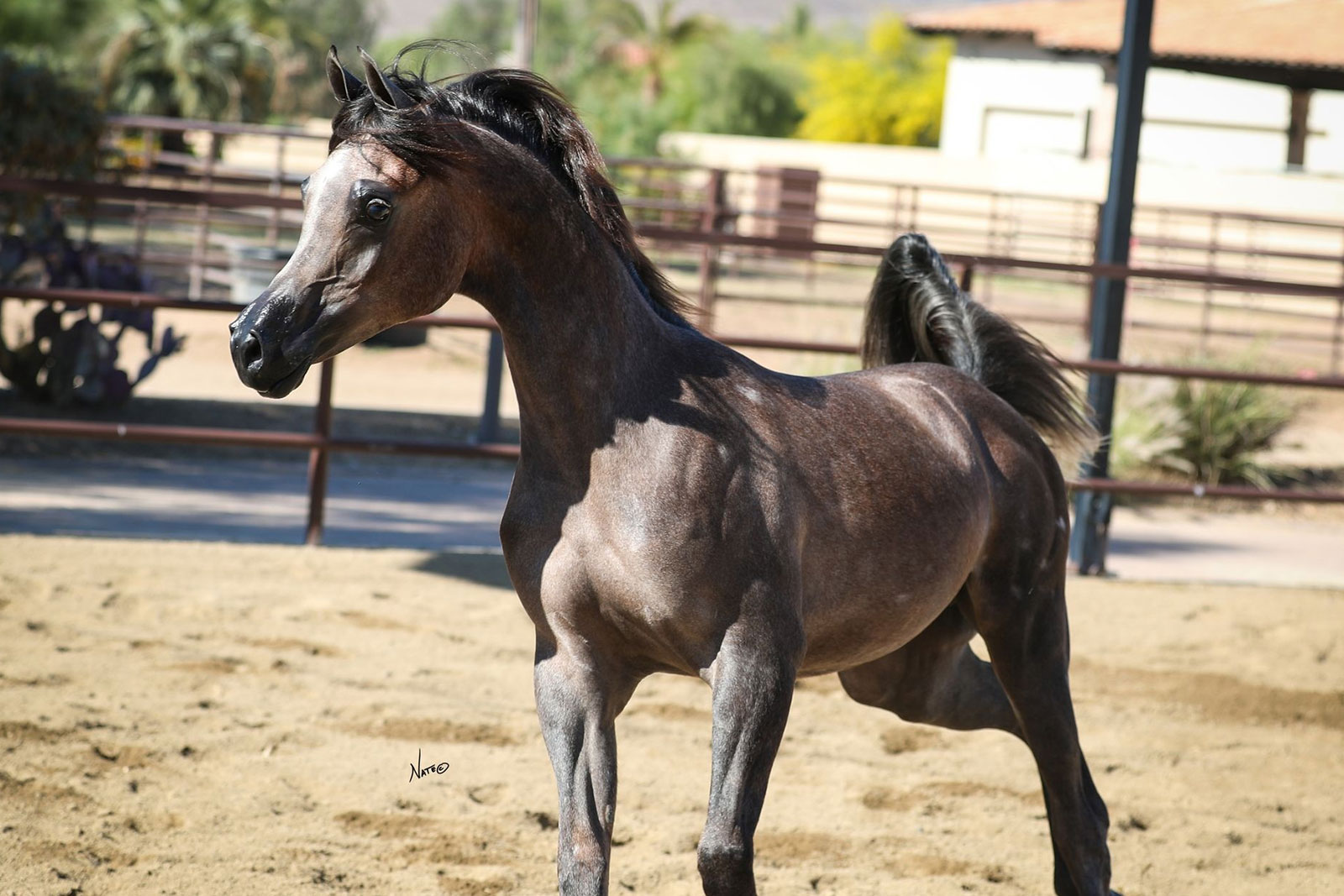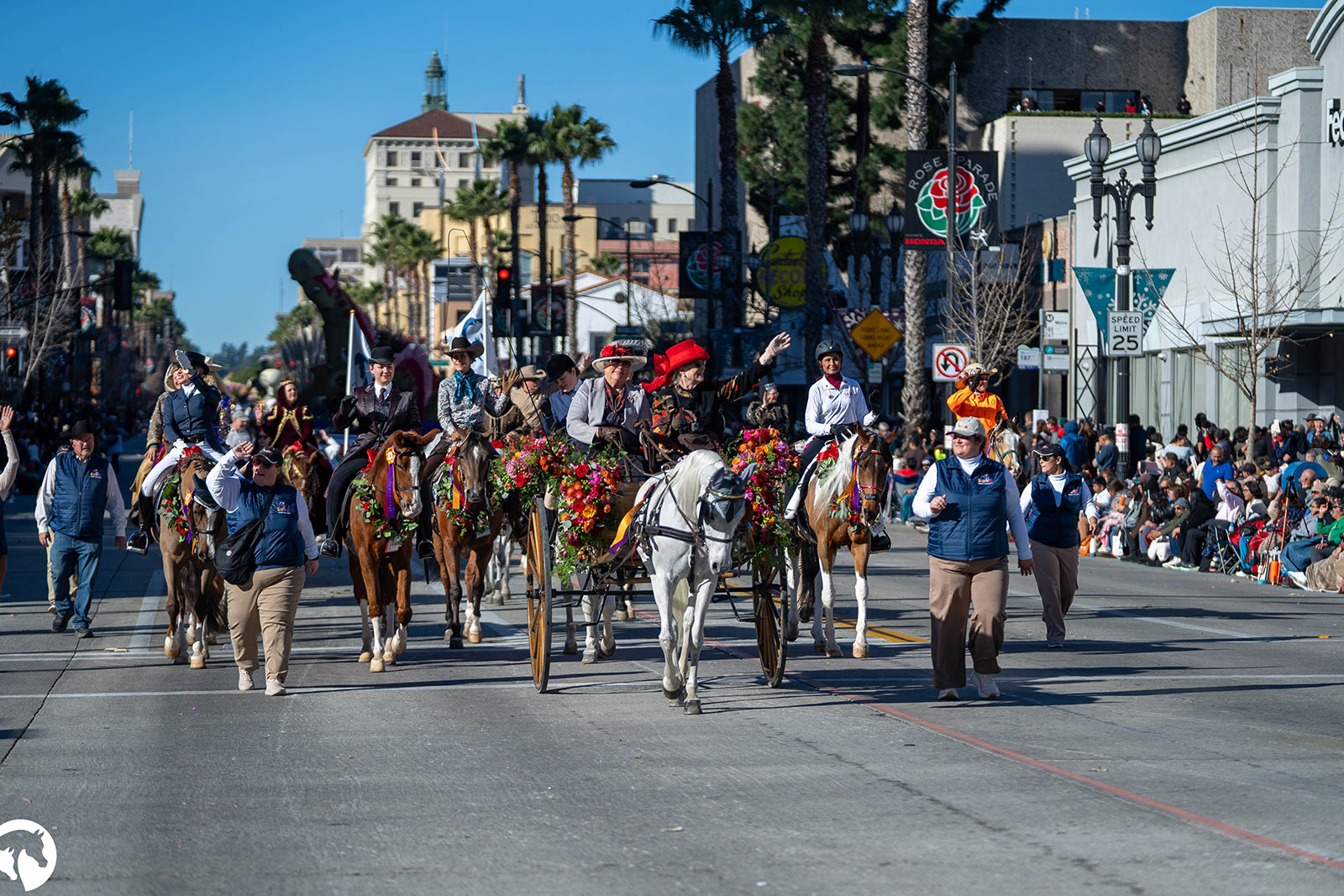On April 16, 2021, Patrick Sullivan of Modern Day Horsemanship started his 2,500 mile journey from Sacramento, California to Georgetown, Kentucky, where he arrived on October 16, 2021.
He took two Straight Egyptian Arabian horses, the black mare Gamilah MJA, sired by Bellagio RCA, out of the Thee Desperado+ daughter, Thee Bahieh, and her maternal brother, grey gelding Haleem MJA, sired by Thee Infidel, out of Thee Bahieh.
He did this incredible trek bridleless and mostly bareback, and visited 20 non-profits, local rescues, and charities while providing liberty demonstrations along the way.


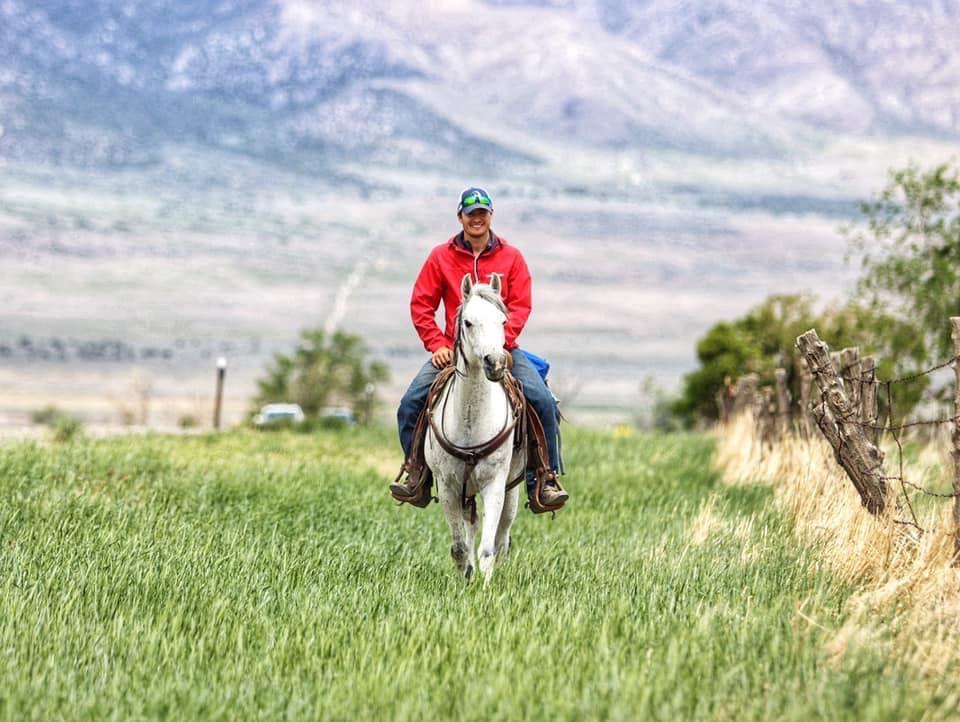
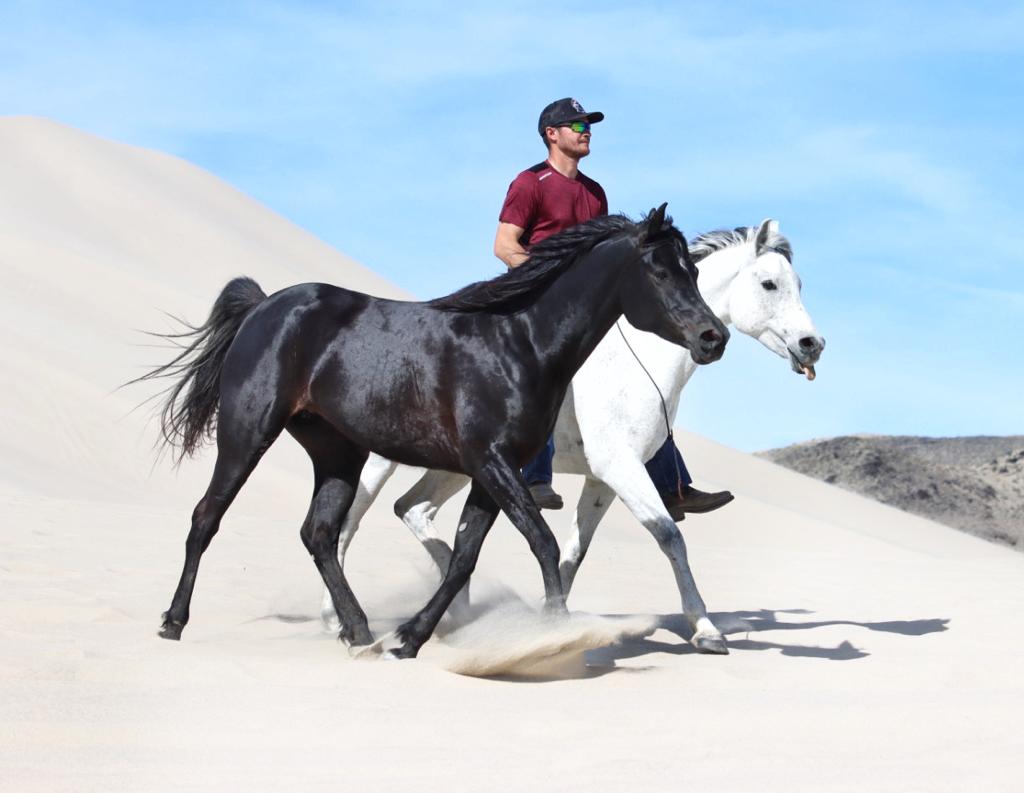
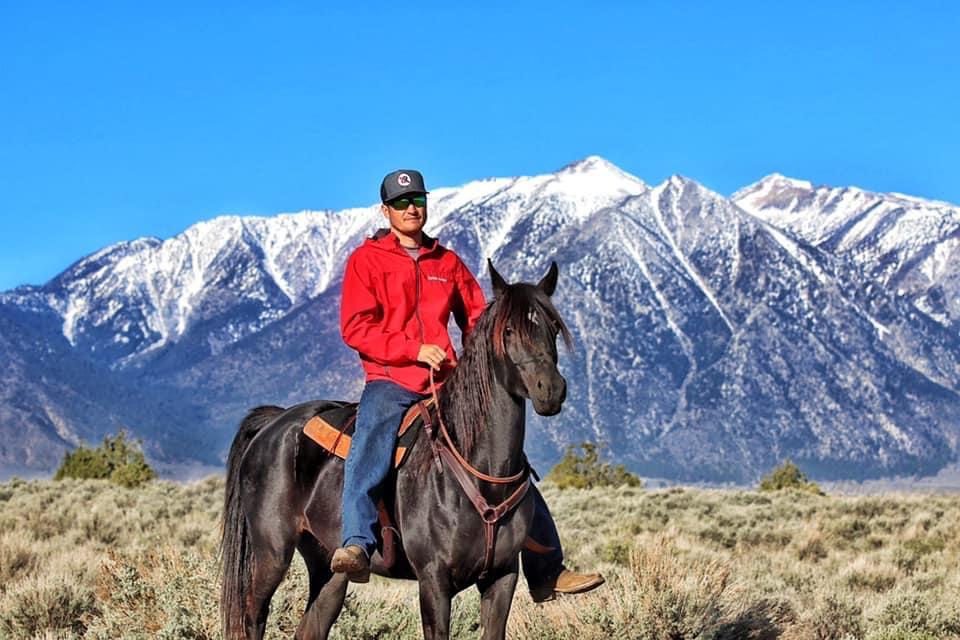
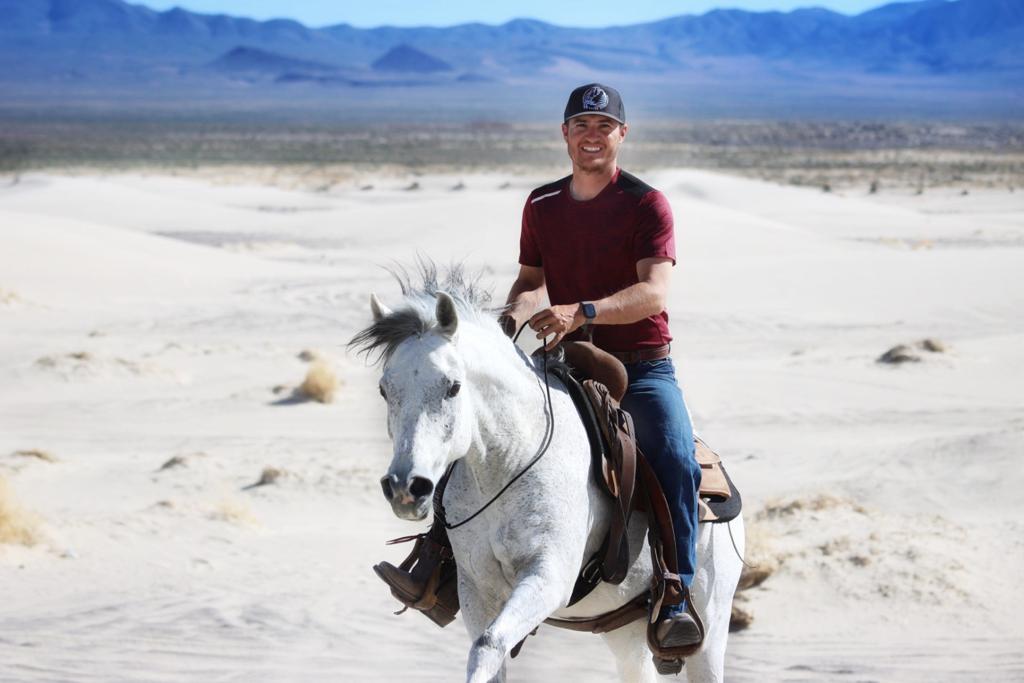

Shawn Crews sat down with Patrick to revisit this incredible journey.
Shawn: I’ll never forget the day when you told me your plan to do this, and honestly, Patrick, I know your whole family and I come from a very optimistic family, however, I considered your level of optimism to be triple of what I know. I’ve known you since before you were involved in horses. Your goal is so large and you have such a positive attitude, but still when you told me about this we were shocked. We are all very horse show goal-oriented, so I was curious as to why you chose to do something so different with your Straight Egyptian.
What was the seed that led you to this tremendous adventure? How did you come up with this plan and was was the vision you had in mind?
Patrick: You were not the only one who thought this was a bit crazy. This idea started six to seven years ago, and started when my mother told me that my great grandfather saw his first Arabian horse in the Chicago state fair in 1945 and fell in love. He ended up purchasing a few horses, however after him, they got out of Arabians until my mother got involved through Arabians Limited and you (Shawn Crews). The idea of this ride was to honor my great grandfather and ride from Texas to the location of the Chicago State Fair where my grandfather’s love began. Slowly the ride transformed into something much bigger, hoping to inspire people to think deeper about the Arabian horse and the connection we can have with them through liberty and bridleless riding.
I have read many historical books like The Classic Arabian Horse by Judith Forbis, and the Authentic Arabian Bloodstock books about how the Arabian horses lived in the tents with the bedouins and were treated as family. I wanted to test that legend out and bring our Arabian horses into our family. I want to really feel and say that these horses are exactly what history says. For me, the way to do this was to ride across the country with them and see if it is possible.
It was a long and amazing journey, one that I will cherish forever.
Shawn: No one in our time here has proved these horses’ athletic abilities until you and Gamilah. Did Gamilah inspire your plan to do this, or did the plan come first?
Patrick: It was a little bit of both. The reason I chose Gamilah to be the main instrument in the journey is because she was the first horse I had started under saddle. She was strong, opinionated and sassy. She is incredibly intelligent and we butted heads for years, however, the more I learned to listen to her and train her in the way she wanted to be trained, the more she wanted to give me. Once we came to that agreement, I knew there was no other soul on this planet that I would want to make this trip with than Gamilah. At the end of the day, I have always told people that I trusted her with my life. I knew she would keep me safe and keep herself safe; We went through so much together. I told her, if we are going to do this, we are going to do it together.
When I think about mares, especially the Arabian mares, I know they can be very difficult at times to earn their trust and respect, a lot more difficult than the geldings. However, when you get to reach the heart of a mare, they will do anything for you.
Shawn: How old was Gamilah when you started this ride?
Patrick: She was 10 years old. We left two days after her birthday.
Shawn: Tell me about the logistics of this trip. Nettie followed you with the trailer, so you always had a safety fall back should you need anything, and you had host farms set up along the way. However, there must have been long stretches along the way without lodging. That is a lot of miles, many of which are not civilized, explain the logistics.
Patrick: Nettie is one of my best friends in the whole world. Initially, she was going to ride with me. However, three months before, she called and said that she was pregnant and couldn’t ride alongside. So, they decided that she would drive the truck and trailer with her camera and document the journey.
We followed HWY 50. For the most part, the highways had a large shoulder which allowed them to stay 30-40 feet off the road, while the smaller roads we were right alongside. I kept panels on the side of the trailer and each night, we would set up a 20′ x 20′ pen behind the trailer where the horses stayed while we slept in the living quarters of the horse trailer.
So many wonderful people stopped along the way were offering assistance, and inviting us into their homes and barns to layover. It was amazing to experience the generosity of the people, stopping to be sure we were okay.
The best part of the ride, in regards to logistics, were the western states of Utah, Nevada, California, and Colorado. It was more open and had so much public land. The terrain was difficult and at one point, we rode up to 11,000 feet in Colorado. As we ventured East, the logistics became a bit more of a challenge.
We went through mountains, deserts, valleys, small towns, fair grounds, rivers. We went through it all!
Shawn: As the ride progressed and word spread, you seemed to gain momentum with the local press.
Patrick: Yes, honestly the ride was amazing, but the most important part of this ride for us was being able to give back to the Arabian horse. We ended up stopping at 19 different non-profits in 11 different states. We would educate them about liberty riding and use our horses to showcase how capable the Arabian horse is, and how powerful the horse-human connection is.
We stopped by non-profits for kids, for the mentally ill and even a prison to educate the prisoners on horsemanship. Our horses were able to teach all that we visited and that was so rewarding. These organizations helped us get through the long days, knowing that our next stop was going to help and educate the next group of people about our Arabian horses and their amazing personalities.
Shawn: You have mentioned the liberty aspect of this ride a few times, can you explain a bit about what liberty means.
Patrick: Liberty is being able to do almost anything with a horse without a halter. Express to your horse what you want it to do, without a bridle or halter. The relationship between horse and human, along with trained cues is the key to create a bond. I often relate to the movie Avatar, if you have the ability to connect with another being, in this case being a horse, they can take us to see things that we could never do on our own. Gamilah and Hal gave me this experience along our journey.
Shawn: Did you feel a bit like those pioneers that crossed the country so many years ago in their covered wagons?
Patrick: One of the main parts about the trip (possibly 1,000 miles), we followed the Pony Express Trail. The pony express was used as a form of communication across the country long before technology. I learned how incredibly strong people were back then. Their lives revolved around horseback, compasses and reading the stars. From time to time, I liked to think that we were the new generation of explorers, experiencing what our ancestors had. Hoping to push the next steps in horsemanship and prove that the Arabian horse is one of the foundation breeds of our country.
Shawn: I have great respect for all Arabian horses, however, my life has revolved around the Straight Egyptian Arabian horse. Are there any special traits to the Straight Egyptian that you feel helped in this experience? Knowing that you have experience with other bloodlines and other breeds, what made the Straight Egyptian special?
Patrick: I’ve never met another horse that could have made that trip, and there is no other horse I would attempt to do it with. What I feel separates the Straight Egyptian is their heart. If you really look at the heart, they are old souls. They seem to be here to teach us, and I believe this comes from their ancestors. I truly believe the Straight Egyptian is the old soul of all horses. When I look in Gamilah’s eyes, I see that soul and it has taught me so much!
There are good things and bad things said about the Straight Egyptian Arabian horse. For anyone who has ever truly gotten to know one, I think can relate to what I am saying.
Shawn: In this project, you have mentioned Nettie being an amazing support, along with your family and a group of sponsors that helped make this possible.
Patrick: I think those who supported us are what made this trip so special. There was not a bigger supporter than my mother, Malinda Passmore. she is all about the Straight Egyptian and wants to make it accessible to everyone, especially the geldings. Our other sponsors were Marah Jamil Arabians, Keri and Carolee Wright, Ann and Fred Gabrielli and The Pyramid Society,
There was one of the biggest professionals in the horsemanship industry that I am friends with. He is not an Arabian horse person, but he told me, “I don’t have a problem with you riding across the country brideless. I don’t have a problem with the time frame or liberty. My biggest concern is that you are doing it on an Arabian!”. This comment inspired me to prove the Arabian stereotype wrong. I will keep his name anonymous out of respect for our friendship, however, I was quite proud to show the world that the Arabian horse can do anything.



